Comparative analysis between Habas’ 2014 and 2019-20 title-winning sides
Despite disappointments in Hero Indian Super League (Hero ISL) 2017-18 and 2018-19, there was an air of confidence enveloping ATK FC going into the Hero ISL 2019-20.

Despite disappointments in Hero Indian Super League (Hero ISL) 2017-18 and 2018-19, there was an air of confidence enveloping ATK FC going into the Hero ISL 2019-20. This return of Antonio Lopez Habas to the club as head coach before the start of the season had a big part in that and the sense of belief eventually culminated into ATK's 3rd title - the 2nd under Habas. The Spaniard led the Kolkata-based outfit to the Hero ISL trophy in the inaugural campaign in 2014 and played a big part in their run to the semis in 2015 before parting ways. Having guided ATK to the Hero ISL 2019-20 crown upon his return, Habas became the first head coach to win two titles in the history of the competition.
Considering the pace with which the Hero ISL has evolved over the seasons, replicating the success from his debut season was no mean feat. As per the 62-year-old’s own admission, “It’s different because in the first season, the Hero ISL wasn’t the same competition. Now it is much more professional. There are better coaches, better players, more teams, more time in the competition. This title is more important than first, but the first was also important because it was the first title.”
Notwithstanding the obvious evolution of the league, however, there are certain statistical and tactical markers between Habas’ 2014 title-winning side and his 2019-20 championship-winning squad which paint an intriguing picture of the parallels and diversions between the two champion sides.
Optimal utilization of the squad
One of Habas’ biggest strengths, perhaps, is his ability to utilize his squads to the fullest, rotating his players wisely to keep his personnel fresh and well-rested. In the 2014 season, the Spaniard used a total of 24 players while the 2019-20 season saw him give game time to as many as 26 players – an understandable progression given the increased number of matches and a few changes due to injuries.
Possession counts for little
Habas is known for his pragmatic style of play and possession, therefore, has never been the priority for the Spaniard. The focus, more or less, tends to be on disciplined manoeuvring off the ball and retaining the team’s shape while defending. The offensive intent of his sides, meanwhile, are mostly fashioned around quick and precise counter-attacks. The trend was quite similar in both his 2014 and 2019-20 outfits. While the 2014 side, on an average, kept 46% possession in their 17 matches, the 2019-20 team just did marginally better with 47%.
Robust defences but with a difference
As an extension to his pragmatic approach, Habas’ sides have always been strong at the back. Both the 2014 and 2019-20 sides were hard to breach, with the 2014 squad managing eight clean sheets (13 goals conceded) in 17 matches whilst the 2019-20 team did one better and enforced nine shut outs (19 goals conceded) albeit in 21 outings. However, the way they went about it has been quite different.
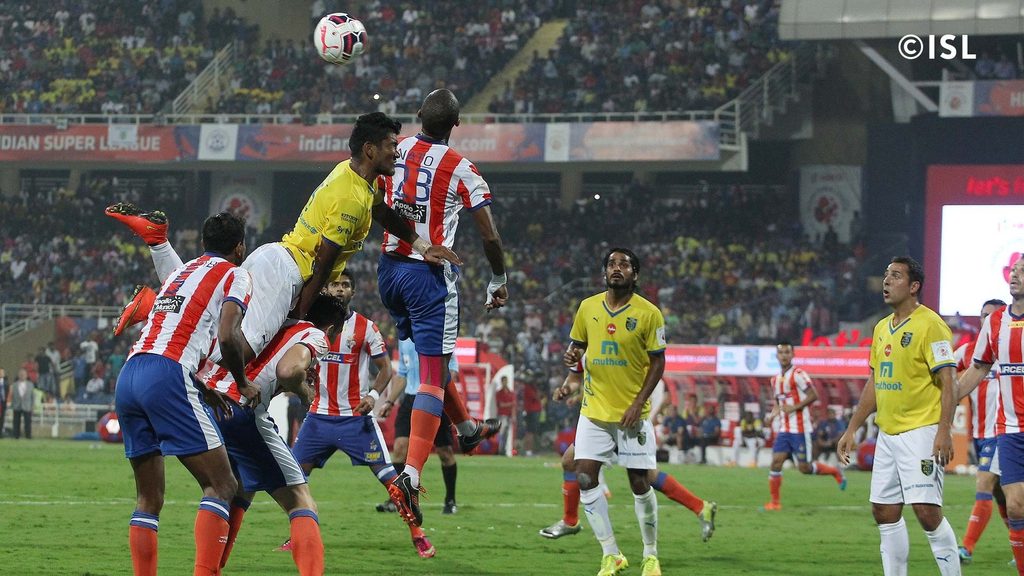
In the 2014 season, the Spaniard primarily fielded a back four with Jose Gonzalez Rey and Arnab Mondal forming the centre-back pairing, flanked by Kinshuk Debnath and Biswajit Saha as the fullbacks. Screening the back four was a double pivot constituting Ofentse Nato as the dedicated defensive enforcer while Borja Fernandez took up more of a box-to-box role in a 4-2-3-1 formation. With two very physical defensive blockers in front of the backline, the 2014 side was mostly designed to snuff out dangers even before it even made to the danger zone, with a large number of interceptions and headed clearances being affected by Nato and Borja from midfield areas. To illustrate, the 2014 team raked up more interceptions (429) and won more aerial duels (205) in 17 matches, compared to the 2019-20 squad (301 interceptions and 143 aerial duels won) in their 21 matches. Consequently, the inaugural champions faced just 4.41 shots from inside the box per match on an average (75 in 17 matches) compared to 6.52 faced (137 in 21 matches) by the 2019-20 team.
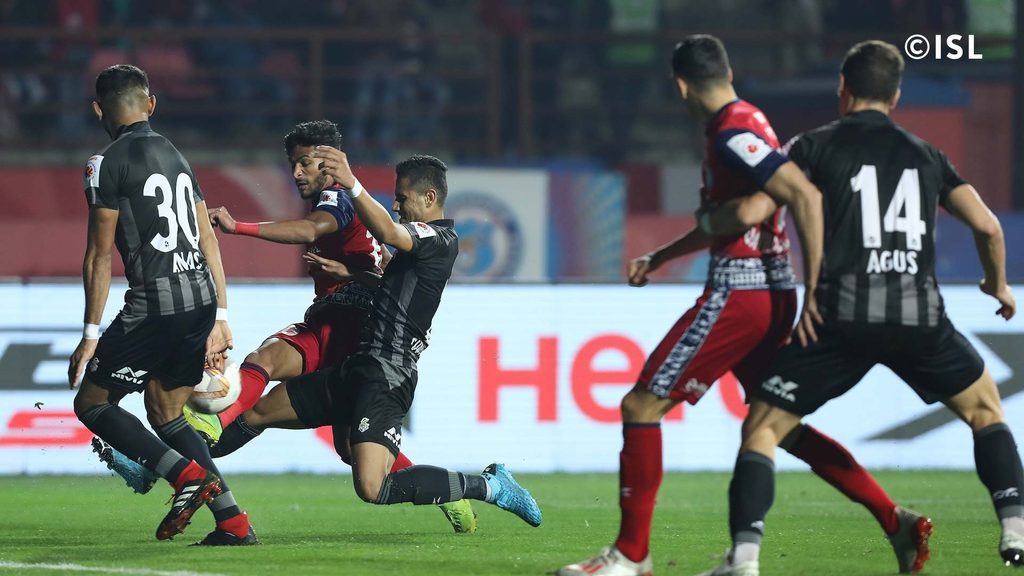
In contrast, Habas mostly opted to field a three-man defence in the 2019-20 season with two flying wing backs in Prabir Das and Michael Soosairaj constantly going up and down the wings depending on the phase of play. With the midfield three of Javier Hernandez, Edu Garcia and Michael Regin or Jayesh Rane, being far more attack-oriented than Nato and Borja, the midfield shield wasn’t quite as imposing as the 2014 one. As a result, more defensive actions were needed to be taken by the backline. The 2019-20 team put in a staggering 693 tackles, 972 clearances and 257 blocks in the Hero ISL 2019-20 – dwarfing the 2014 side’s tally of 388 tackles, 691 clearances and 116 blocks.
Offensively stronger
While ATK’s 2014 side boasted offensive stars like Fikru, Joffre, Luis Garcia, Baljit Singh Saini and Jakub Podany, their title charge was largely pillared by their stellar defence. The 2014’s attacking unit managed to do just what was required of them, scoring 17 goals in 17 matches at an average of one goal every match. Fikru was ATK’s top scorer that season, scoring five, while none of the other players scoring more than two.
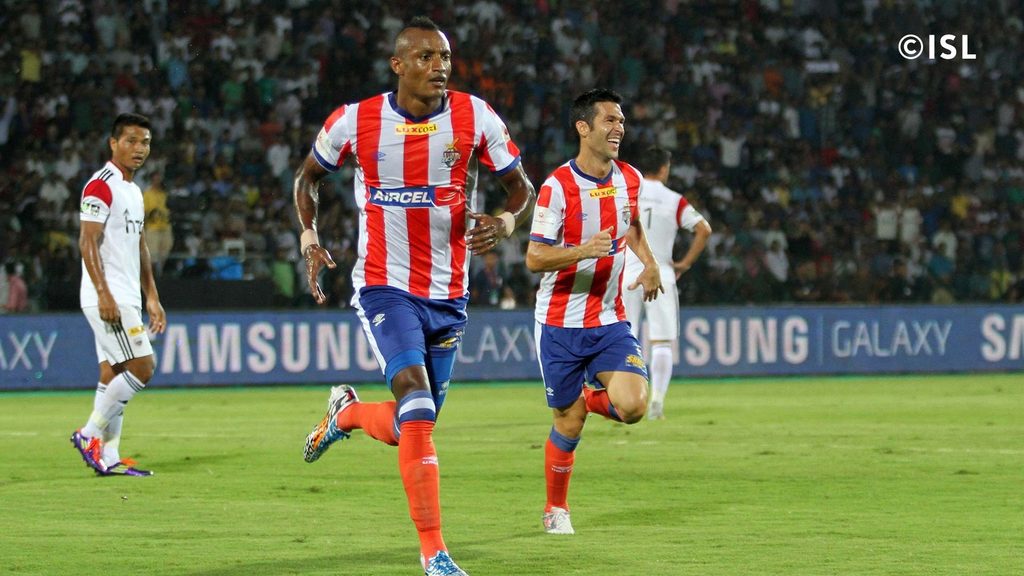
Comparatively, the 2019-20 title winners scored 39 goals in 21 matches with an average of 1.86 goals per match - almost double of their 2014 counterparts. As many as three ATK players scored more than five goals in the 2019-20 campaign, with the electrifying Roy Krishna getting on the scoresheet 15 times, followed by strike partner David Williams with seven and Spaniard Edu Garcia with six.
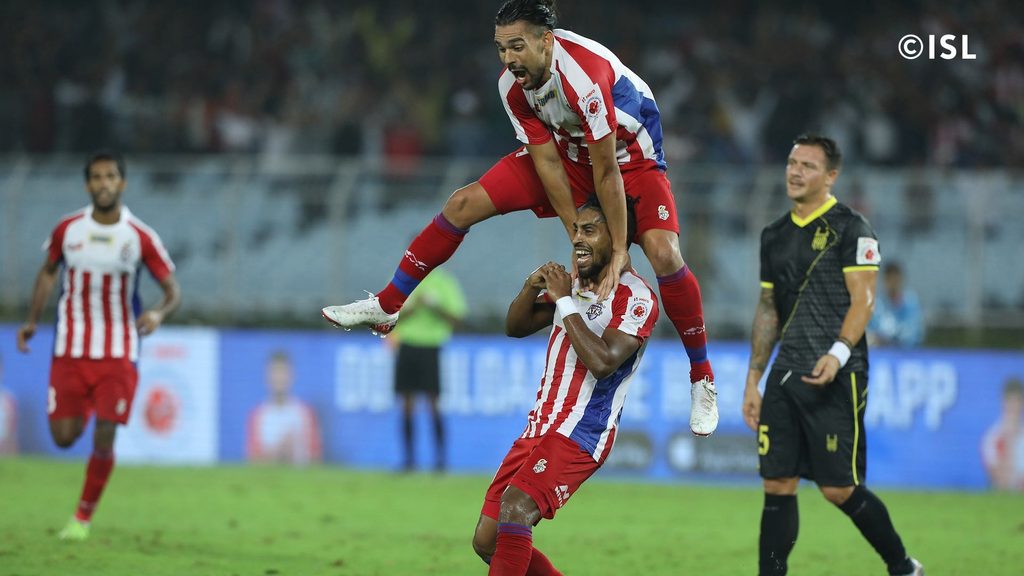
In fact, such was the impact of the Krishna-Williams partnership up front that Habas himself admitted that the 3-5-2 formation was devised exclusively to fit in the two forwards in the system. Another big reason behind ATK’s impressive attacking numbers in the recently-concluded season was the impact of wing-backs Prabir and Soosairaj, who chipped in with crucial assists and goals to help ease the burden off their midfielders and forwards. Habas’ 2014 ATK side lacked the variety and options, with Luis Garcia, Borja, Joffre and Fikru almost exclusively shouldering the twin burden of scoring and creating the goals.
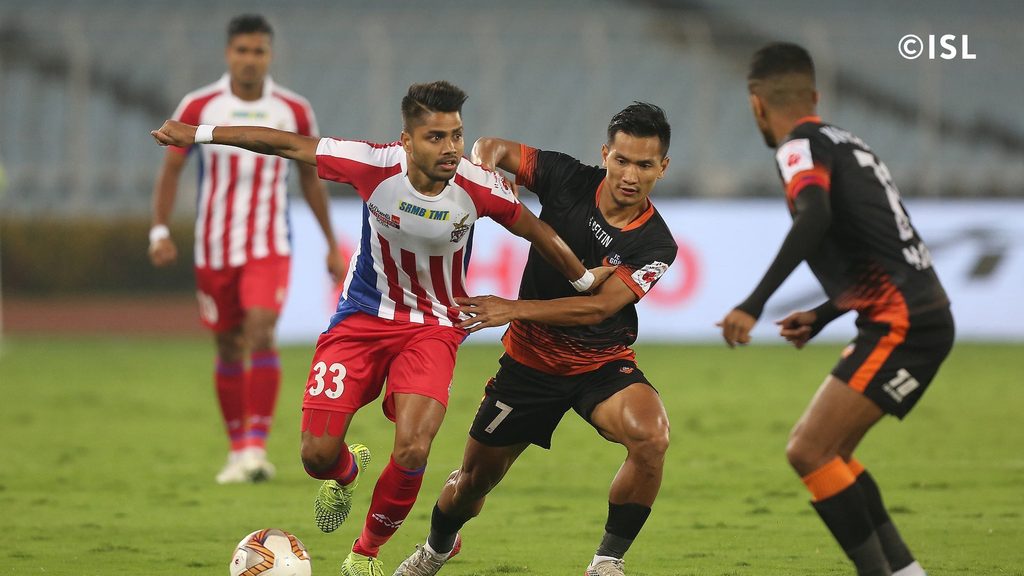
One interesting fact, however, is despite the heavy contributions from Soosai and Prabir down the wings, it was the 2014 team which was prone to playing in more crosses inside the box compared to the 2019-20 side. Joffre, Saini, Podany and Co. played in a massive 277 crosses in the 17 matches in Hero ISL 2014 compared to the 2019-20 outfit’s 209 in 21 games. With the towering Fikru primarily leading the line for ATK in 2014, playing in frequent crosses to maximize the Ethiopian’s physical prowess and height is somewhat understandable. Krishna and Williams, meanwhile, aren’t quite as physically imposing and rely more on their speed and technical ability, which in turn prompted the team and Habas to adopt different avenues to optimally use the two star strikers’ strengths.

























